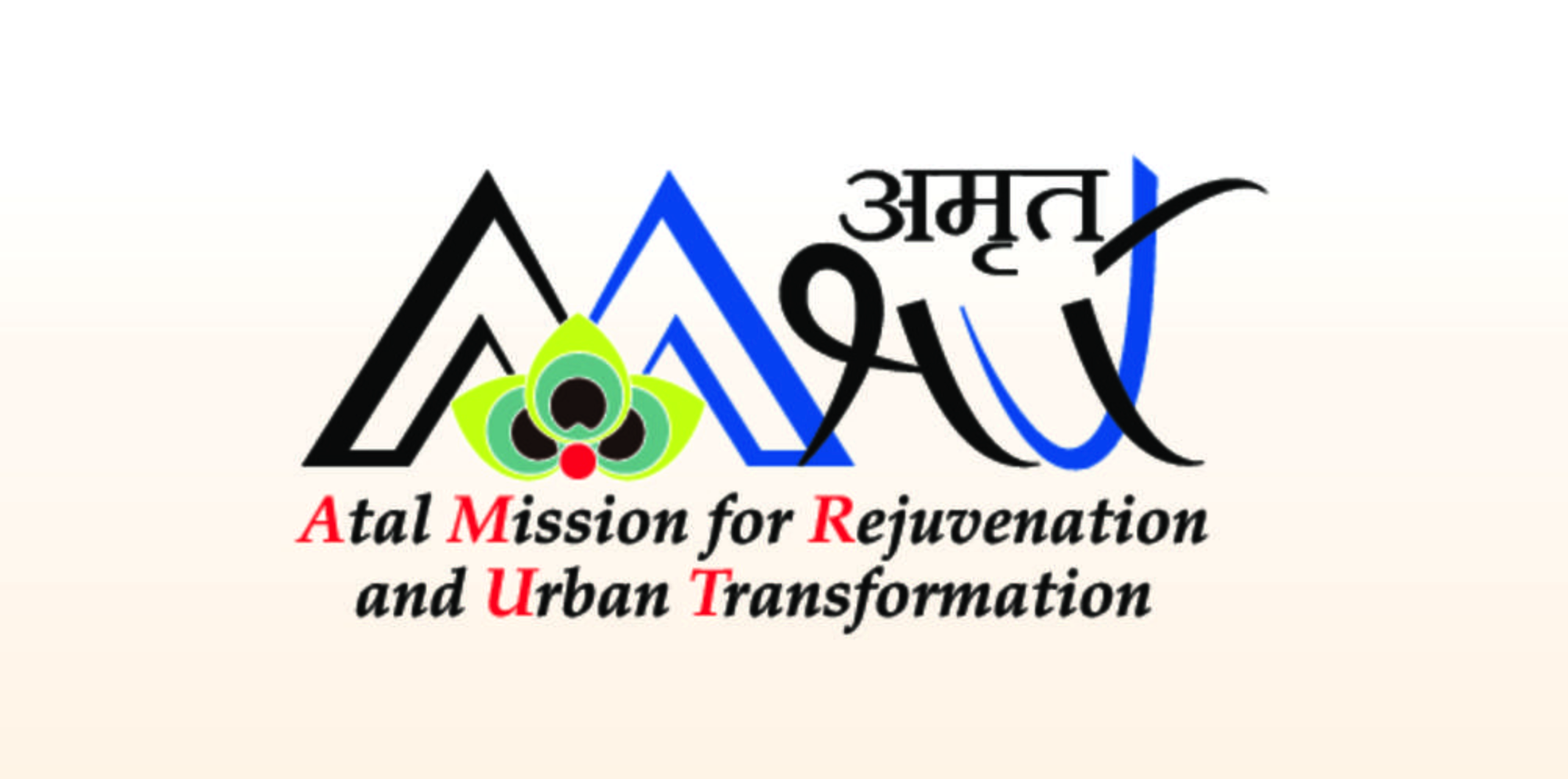AMRUT scheme

- 30 May 2024
Why is it in the News?
Around 36% of India’s population is living in cities and by 2047 it will be more than 50%. The World Bank estimates that around $840 billion is required to fund the bare minimum urban infrastructure over the next 15 years.
About Atal Mission for Rejuvenation and Urban Transformation (AMRUT):
- AMRUT was launched to enhance the quality of life by providing basic civic amenities, especially benefiting the poor and disadvantaged.
- The mission focuses on infrastructure development to deliver better services to citizens.
- AMRUT covers 500 cities, including all cities and towns with a population of over one lakh that have notified Municipalities.
About AMRUT 2.0:
- AMRUT 2.0 will promote circular economy of water through development of City Water Balance Plan (CWBP) for each city focusing on recycle/reuse of treated sewage, rejuvenation of water bodies and water conservation.
- It will help cities to identify scope for projects focusing on universal coverage of functional water tap connections, water source conservation, rejuvenation of water bodies and wells, recycle/reuse of treated used water, and rainwater harvesting.
- Based on the projects identified in CWBP, Mission envisages to make cities ‘water secure’ through circular economy of water.
The target in the second phase of AMRUT is to:
-
- Improve sewage and septic management
- Make cities water-safe
- Ensure no sewage drains into rivers
- AMRUT 2.0 focuses on enhancing sewerage and septic management to make all Indian cities water secure.
Aim:
- Achieve 100% coverage of water supply to all households in around 4,700 urban local bodies by providing about 2.68 crore tap connections.
- Achieve 100% coverage of sewerage and septage in 500 AMRUT cities by providing around 2.64 crore sewer or septage connections.
Principles and Mechanism:
- Adopt principles of the circular economy to promote conservation and rejuvenation of surface and groundwater bodies.
- Promote data-led governance in water management and leverage the latest global technologies and skills through a Technology Sub-Mission.
- Conduct 'Pey Jal Survekshan' to encourage competition among cities for better water management.
Coverage:
- Extend coverage from 500 cities in the first phase to 4,700 cities and towns.
- Benefit more than 10.5 crore people in urban areas.
Analysis of the AMRUT Scheme:
Performance of the Scheme:
- As of May 2024, the AMRUT dashboard reports that ?83,357 crore has been disbursed. This funding has facilitated:
- 58,66,237 tap connections
- 37,49,467 sewerage connections
- Development of 2,411 parks
- Replacement of 62,78,571 LED lights
Criticism of the Sheme:
Despite these achievements, significant issues persist:
- Approximately 2,00,000 people die annually due to inadequate water, sanitation, and hygiene.
- In 2016, India's disease burden from unsafe water and sanitation was 40 times higher per person than China's, with minimal improvement since then.
- Large volumes of untreated wastewater increase disease vulnerability.
- Around 21 major cities are expected to run out of groundwater. A NITI Aayog report predicts that 40% of India's population will lack access to drinking water by 2030.
- Nearly 31% of urban households lack piped water, and 67.3% are not connected to a piped sewerage system.
- The average urban water supply is 69.25 litres per person per day, far below the required 135 litres.
- Air quality in AMRUT cities and other urban areas continues to worsen.
- While the National Clean Air Programme was launched in 2019 to address air quality, AMRUT 2.0 focuses primarily on water and sewerage issues.
Challenges:
The AMRUT scheme has faced several fundamental challenges:
- Project-Oriented Approach: The scheme adopted a project-oriented rather than a holistic approach.
- Lack of City Participation: It lacked significant involvement from elected city governments, being driven instead by bureaucrats, parastatals, and private companies.
- Governance Issues: Governance was dominated by non-elected officials, violating the 74th constitutional amendment.
- The apex committee was led by the MOHUA secretary, and state committees were headed by chief secretaries, excluding people's representatives.
- Private Nexus: The scheme favored a private nexus of consultants and professionals, sidelining local elected officials.
- Water Management: Effective water management in cities requires consideration of climate, rainfall patterns, and existing infrastructure, which the scheme did not adequately address.
- Inefficient Sewage Treatment: Sewage treatment plants were inefficiently designed, with faecal matter traveling longer distances than the average worker's commute.
- Urban Planning: Driven by private players and real estate developers, urban planning often led to the disappearance of water bodies, disrupted stormwater flows, and a lack of proper stormwater drainage systems.
Way Forward:
To improve the AMRUT scheme:
- Nature-Based Solutions: Implement nature-based solutions.
- Comprehensive Methodology: Adopt a comprehensive methodology that integrates all aspects of urban development.
- People-Centric Approach: Focus on a people-centric approach, involving local communities in decision-making.
Empower Local Bodies: Empower local bodies to take a leading role in governance and implementation.
